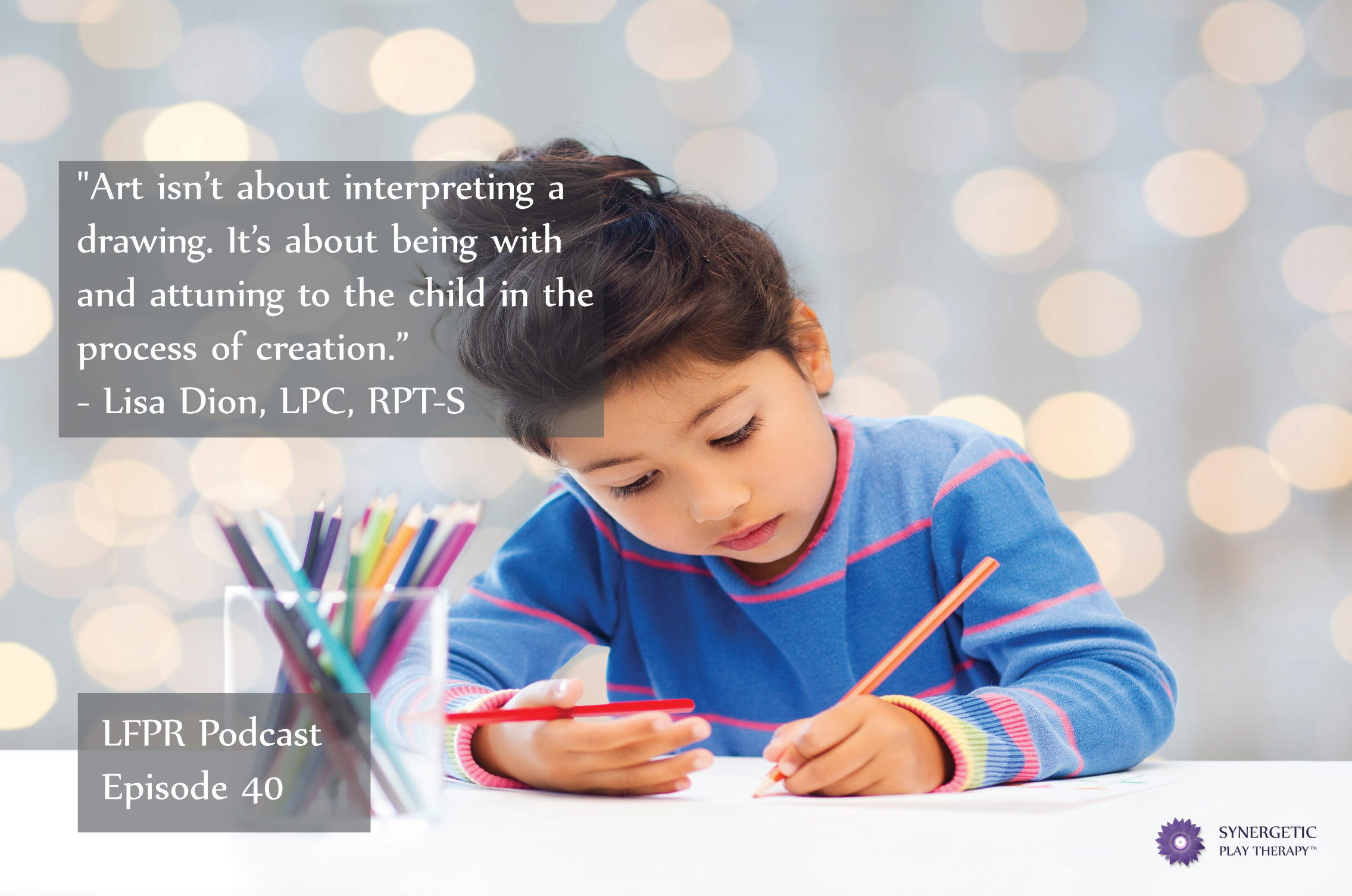The Elements of Art in Play Therapy
Art in the playroom can be a challenge, especially for therapists who believe they are artistically limited. But art provides a necessary and informative outlet for children. It’s not the final product that’s important; it’s the process that counts. Being present and attuned keeps the therapist from painting themselves into a corner of insecurity and self-doubt.
1:24 Lisa introduces LFPR series
2:50 Art can be scary for play therapists
3:30 Play therapists who feel like they’re not artists
5:15 Art materials are wide-ranging
5:50 You must know art materials intimately
6:30 Take the time to explore the materials in your playroom
7:38 Finding an art material that is in your window tolerance
8:50 Lessons from the Playroom Podcast 4: What Our Playroom Says About Us
10:00 What does art bring out in the child?
10:58 The importance of providing a timeframe
12:21 Why is it important to allow the art to unfold?
13:30 Symbols change over time and require us to be flexible
14:30 Children will hide things and change things in their art and reflect the relationship they have with their therapist
15:00 It’s important to be in the process with the child
15:39 Why is it vital not to interpret art brought in from home?
17:30 How does the nervous system play a role?
17:50 Attuning right brain to right brain
18:30 Regulating yourself






